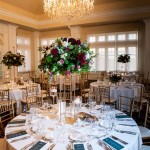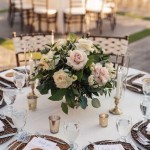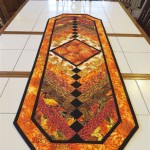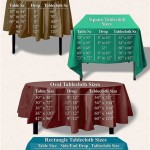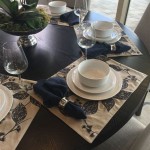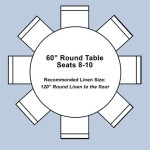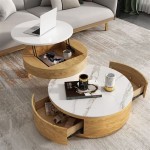How To Use A Plastic Tablecloth As a Photography Backdrop
A plastic tablecloth, often associated with picnics and casual gatherings, can be a surprisingly versatile and economical alternative to traditional photography backdrops. While professional-grade backdrops offer superior quality and specific features, a plastic tablecloth can serve as a temporary solution, particularly for amateur photographers, hobbyists, or those on a tight budget. This article provides a comprehensive guide on how to effectively use a plastic tablecloth as a photography backdrop, covering preparation, setup, and potential challenges.
The appeal of using a plastic tablecloth lies primarily in its affordability and accessibility. They are readily available in a variety of colors and patterns at most party supply stores, dollar stores, and supermarkets. This accessibility makes them a convenient option for spontaneous photoshoots or when a more permanent backdrop is unavailable. However, it is important to understand the limitations and potential drawbacks associated with using plastic, and to implement strategies to mitigate these issues.
Choosing the Right Plastic Tablecloth
Selecting the appropriate plastic tablecloth is crucial for achieving the desired photographic outcome. Several factors should be considered, including color, texture, size, and material. Each of these factors contributes to the overall look and feel of the final image and should be carefully evaluated in relation to the intended subject and aesthetic.
Color: Color plays a significant role in setting the mood and tone of the photograph. A solid, neutral color like white, gray, or black is often the most versatile choice, as it does not distract from the subject and allows for easy editing. Brighter colors can be used for more vibrant and playful images, but it is important to ensure that the color complements the subject and does not create unwanted color casts. Avoid overly reflective or saturated colors, as they can be difficult to work with and may require extensive post-processing.
Texture: Most plastic tablecloths have a smooth, glossy surface. While this can be desirable for creating a clean and modern look, it can also introduce unwanted glare and reflections. Matte or textured plastic tablecloths are preferable, as they diffuse light more evenly and minimize the risk of distracting highlights. If a glossy tablecloth is the only option, strategies to reduce glare, such as adjusting lighting angles or using a diffusion filter, should be employed.
Size: The size of the tablecloth should be sufficient to completely cover the background and, if necessary, extend onto the floor to create a seamless transition. A larger tablecloth provides more flexibility in terms of shooting angles and subject placement. Consider the size of the subject being photographed and the desired field of view when determining the appropriate size. A general rule of thumb is to choose a tablecloth that is at least twice the width and height of the subject.
Material: Plastic tablecloths are typically made from polyethylene or vinyl. Thicker, heavier-duty materials are generally more durable and less prone to wrinkling or tearing. They also tend to hang better and create a smoother, more uniform background. Thinner materials can be more prone to creases which can be difficult to remove. It's usually worth paying a little more for a higher quality tablecloth.
Setting Up The Plastic Tablecloth
Proper setup is essential to minimizing the drawbacks of using a plastic tablecloth as a backdrop. This involves addressing issues such as wrinkles, creases, and sagging. The goal is to create a smooth, uniform surface that does not detract from the subject of the photograph.
Preparation: Before setting up the tablecloth, carefully inspect it for any creases or folds. If possible, unfold the tablecloth a day or two before the photoshoot and allow it to hang freely to help relax the material. For stubborn wrinkles, a low-heat iron can be used with extreme caution. Place a thin cloth between the iron and the plastic to prevent melting or damage. Alternatively, a steamer can be used to gently remove wrinkles without direct contact.
Hanging the Tablecloth: There are several methods for hanging the tablecloth, depending on the available space and equipment. One common method involves using clamps or clips to attach the tablecloth to a backdrop stand or a sturdy rod. Ensure that the clips are evenly spaced to distribute the weight and prevent sagging. Another option is to use tape or tacks to secure the tablecloth to a wall. However, this method may damage the wall surface, so it is important to use removable tape or tacks and to test them in an inconspicuous area first. For larger tablecloths, a combination of methods may be necessary to ensure a secure and wrinkle-free backdrop.
Addressing Wrinkles and Creases: Even with careful preparation, some wrinkles and creases may still be visible. These can be minimized by stretching the tablecloth tautly and securing it firmly at multiple points. If wrinkles persist, adjust the lighting to minimize their appearance. Backlighting or side lighting can often accentuate wrinkles, while diffused frontal lighting can help to soften them. In post-processing, tools such as the clone stamp or healing brush can be used to remove any remaining imperfections.
Creating a Seamless Background: For portraits or product photography, creating a seamless background can enhance the overall aesthetic. This involves extending the tablecloth onto the floor and curving it upward to create a smooth, continuous surface. This eliminates the sharp line where the background meets the floor, creating a more professional and polished look. To secure the tablecloth to the floor, use tape or weights to prevent it from moving or wrinkling. Ensure that the transition between the background and the floor is smooth and free of any visible seams or creases.
Mitigating Potential Problems And Best Practices
While plastic tablecloths can be a cost-effective backdrop solution, they also present certain challenges that need to be addressed. These challenges include glare, color casts, and durability issues. By understanding these potential problems and implementing appropriate strategies, it is possible to minimize their impact and achieve satisfactory results.
Controlling Glare: The glossy surface of many plastic tablecloths can create unwanted glare and reflections, especially when using direct lighting. To minimize glare, use diffused lighting sources, such as softboxes or umbrellas, to soften the light and spread it more evenly across the background. Adjust the angle of the light to avoid direct reflection into the camera lens. A polarizing filter can also be used to reduce glare and reflections, but it may affect the overall color balance of the image. Another solution is to spray the tablecloth with a matte finish spray, but this is a permanent solution and should be tested in an inconspicuous area first.
Addressing Color Casts: Depending on the color and reflectivity of the tablecloth, it may introduce unwanted color casts into the image. This is particularly noticeable when using brightly colored tablecloths or when photographing subjects with delicate skin tones. To minimize color casts, use a white balance card or a color checker to accurately calibrate the camera's white balance. Shoot in RAW format to allow for more precise color correction in post-processing. If a color cast is still present, use color correction tools in image editing software to neutralize the colors and restore accurate skin tones.
Handling Durability Issues: Plastic tablecloths are generally less durable than professional-grade backdrops and can be easily torn or damaged. To prevent damage, handle the tablecloth with care and avoid placing sharp objects on or near it. If the tablecloth is damaged, it can be temporarily repaired with tape or glue, but a replacement may be necessary. Consider reinforcing the edges of the tablecloth with tape or fabric to prevent tearing. Store the tablecloth carefully when not in use, preferably rolled up to prevent creases and wrinkles.
Utilizing Post-Processing: Post-processing plays a crucial role in refining images taken with a plastic tablecloth backdrop. Tools such as the clone stamp, healing brush, and spot removal tool can be used to eliminate any remaining imperfections, such as wrinkles, creases, or blemishes. Color correction tools can be used to neutralize color casts and restore accurate color balance. Additionally, post-processing can be used to enhance the overall aesthetic of the image by adjusting brightness, contrast, and saturation.
In summary, while not a substitute for professional backdrops, a plastic tablecloth can serve as a viable and affordable option for photography. By carefully selecting the appropriate tablecloth, setting it up properly, and mitigating potential problems, it is possible to achieve satisfactory results and create visually appealing images. The key is to understand the limitations of using plastic and to implement strategies to overcome these challenges.

Photo Booth Backdrop Makoodle

The Easiest Diy Fringe Tablecloth Party Backdrop Ever

Tablecloth Backdrop Diy 4 Easy Steps Mistakes To Avoid Tablecoversnow Com

D I Y Photo Booth Backdrop For 10 The Thinking Closet

Diy Pinata Fringe Photo Backdrop A Kailo Chic Life

Backdrop Plastic Table Cloth Ideas

Tablecloth Backdrop Diy 4 Easy Steps Mistakes To Avoid Tablecoversnow Com

Diy Pinata Fringe Photo Backdrop A Kailo Chic Life

D I Y Photo Booth Backdrop For 10 The Thinking Closet

Photo Booth Backdrop Makoodle
Related Posts

